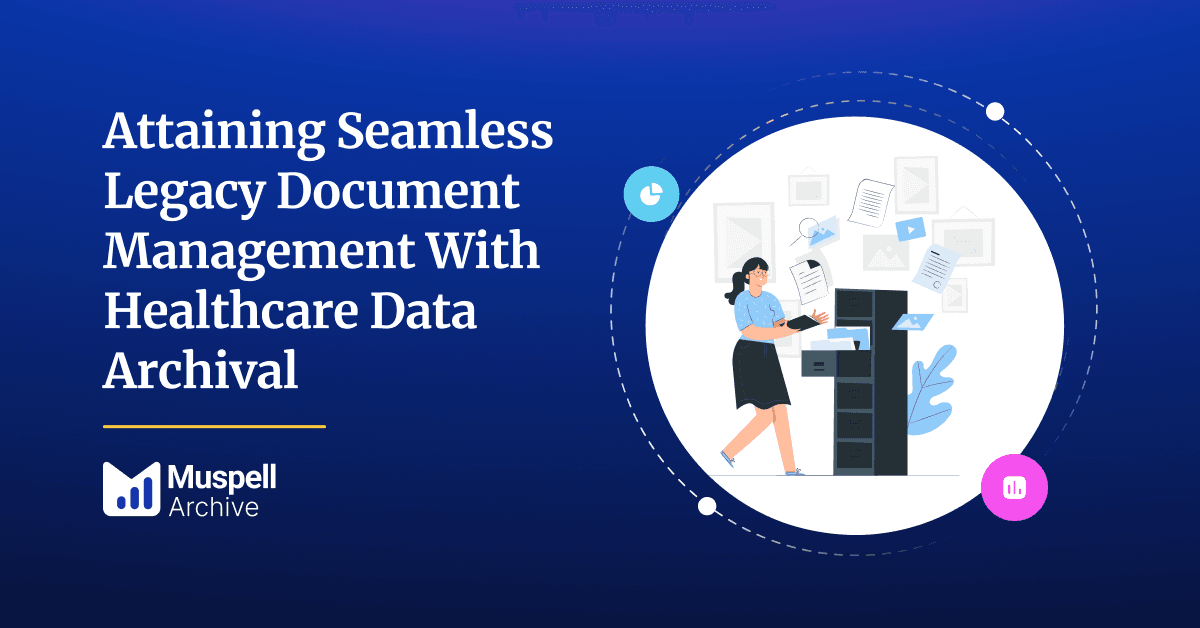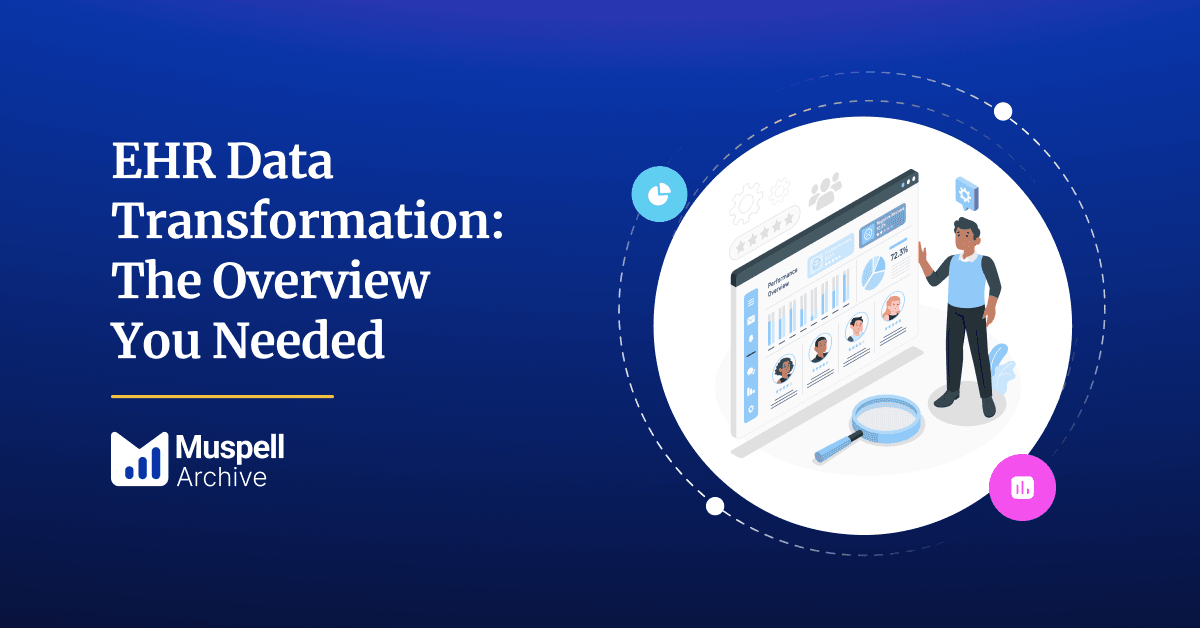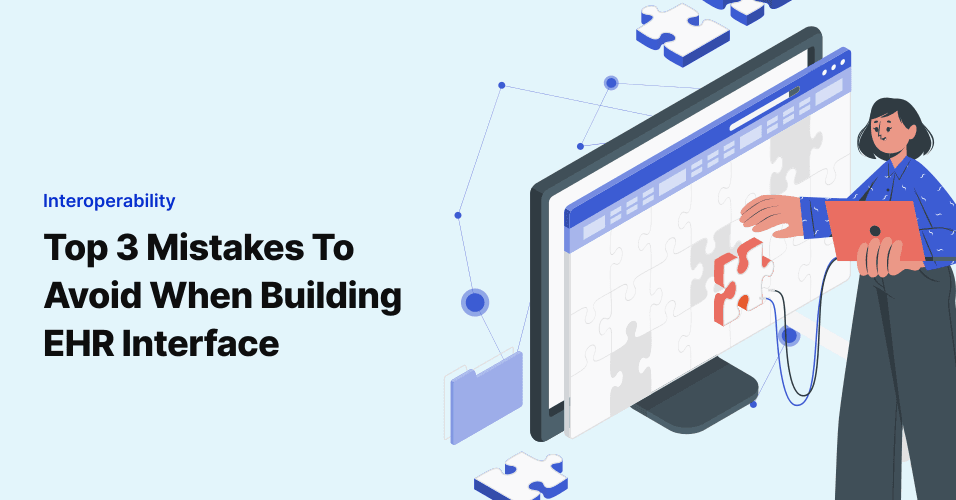
Attaining Seamless Legacy Document Management With Healthcare Data Archival
At its core, healthcare data archival solutions serve as secure repositories for legacy electronic health …

As the healthcare IT landscape evolves, the importance of EHR applications grows significantly. Therefore, making changes to these applications can pose a considerable challenge for healthcare organizations. To ensure a smooth transition to a new EHR system, healthcare organizations must recognize data transformation as a crucial component of their implementation strategy.
Healthcare data transformation involves transferring patient health records from an obsolete EHR application to a modernized one. Following the release of the Cures Act Final Rule in 2020, data transformation in this updated context primarily involves converting patient health data into Fast Healthcare Interoperability Resources (FHIR) format, which stands as the prevailing industry standard for Protected Health Information (PHI).
An essential component of data transformation is mapping data elements. This entails creating connections between various data sets, guaranteeing seamless integration and analysis of information sourced from different origins. Data transformation not only improves the caliber of healthcare data but also paves the way for sophisticated analytics, artificial intelligence, and machine learning tools that can facilitate discoveries and advancements in patient care.
The FHIR data standard was conceptualized to facilitate the seamless exchange of healthcare information between different healthcare IT platforms. Electronic Health Record (EHR) systems utilize diverse techniques to retrieve pertinent patient data, gathering data from various sources within the system. A widely employed format for this exchange is the Consolidated Clinical Document Architecture (CCDA), which operates on an XML-based standard. CCDA encompasses both structured and unstructured data components, enabling a thorough depiction of patient information.
In this procedure, the elements from the CCDA are aligned with the relevant FHIR resources. Utilizing the Clinical Data Architecture (CDA) standard as a foundation for organizing and presenting clinical data, the information is structured to harmonize with FHIR resources. This mapping of CCDA data to FHIR resources is the transformation that fosters interoperability across various systems.
As discussed in the section above, EHR data transformation makes a healthcare organization's data future-proof. With numerous innovations paving the way for a well-connected healthcare ecosystem, maintaining data in the FHIR format isn't just a matter of convenience anymore; it is a necessity! The immediate benefits that await your healthcare facility following EHR data transformation are as follows:
Adopting best practices during the data transformation process enables healthcare facilities to ensure successful transitions, maintain data accuracy, and unlock the full potential of digital healthcare solutions. Most importantly, these best practices enable healthcare organizations to evolve into a future-ready entity that can seamlessly integrate with a wide range of modernized healthcare IT solutions.
Thorough Planning: Develop a comprehensive migration plan that considers data mapping, cleansing, and validation processes. A well-thought-out strategy minimizes disruptions and ensures a smooth transition.
Data Quality Assurance: Implement robust data quality assurance measures to maintain the accuracy and completeness of information. Regular audits and validation checks are essential to identify and rectify discrepancies.
Interoperability Standards: Adhere to interoperability standards such as HL7 (Health Level Seven) to facilitate seamless data exchange between different systems. Standardized data formats enhance compatibility and reduce integration challenges.
Compliance Adherence: Prioritize compliance with regulatory frameworks like HIPAA to protect patient privacy and maintain data security throughout the migration process.
EHR data migration and data transformation are integral components of the ongoing digital transformation in healthcare. As technology continues to advance, ensuring the seamless transformation of patient data and optimizing its utility will be critical for healthcare providers. By adopting the best practices and staying updated with industry standards, healthcare organizations can harness the full potential of EHRs. This in turn enables them to deliver enhanced patient care and drive innovations in the healthcare landscape.
Join over 3,200 subscribers and keep up-to-date with the latest innovations & best practices in Healthcare IT.

At its core, healthcare data archival solutions serve as secure repositories for legacy electronic health …

Healthcare has witnessed a significant increase in Mergers and Acquisitions (M&As) in the last decade. One …

One of the key benefits to hospitals for investing in a robust EHR like Epic is to not only cultivate their …